Mills
Windmills
Windmills have been in Europe for hundreds of years. The blades catch the wind and converts that power to drive the grinder. There are many different types of windmills. On the Via Molina routes you can come across small village mills, but also fascinating advanced industrial mills.Due to the flat land and free wind conditions, the Netherlands has made extensive use of windmills. There are about 1275 windmills left of the thousands that have once been in our country. Germany also has a lot of windmills. Denmark still has 139 (partially) complete windmills, of which some can be visited.
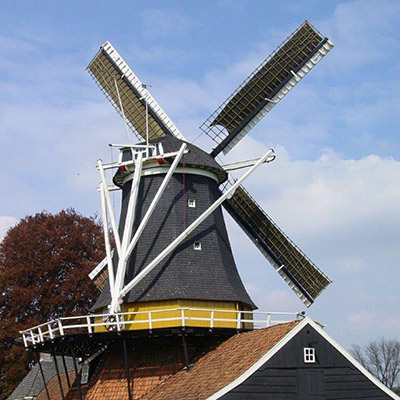

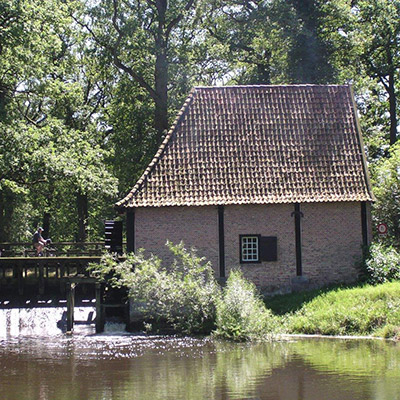
Watermill
Most likely the watermill originates from before the windmill. The fact is that man has been using hydropower for thousands of years. Water mills use running water; mountain creeks, small and large streams and large flowing rivers. You can find water mills high up in the mountains, in river valleys, near large cities and hidden places in the forest near small villages. Europe has been full of thousands and thousands of water mills, that have transformed the natural landscape into a cultural landscape. The water mill can have all kinds of grinding functions and can be driven by a horizontal or vertical water wheel or a modern turbine.Horse mill
This mill type was not only horse driven, but also by dogs, oxen or any animal with enough power for the grinder. Dogs were often used for light churning on farms and livestock for powering all other heavier milling. Often horse mills were separate buildings or they were located in a farm or a house in the city.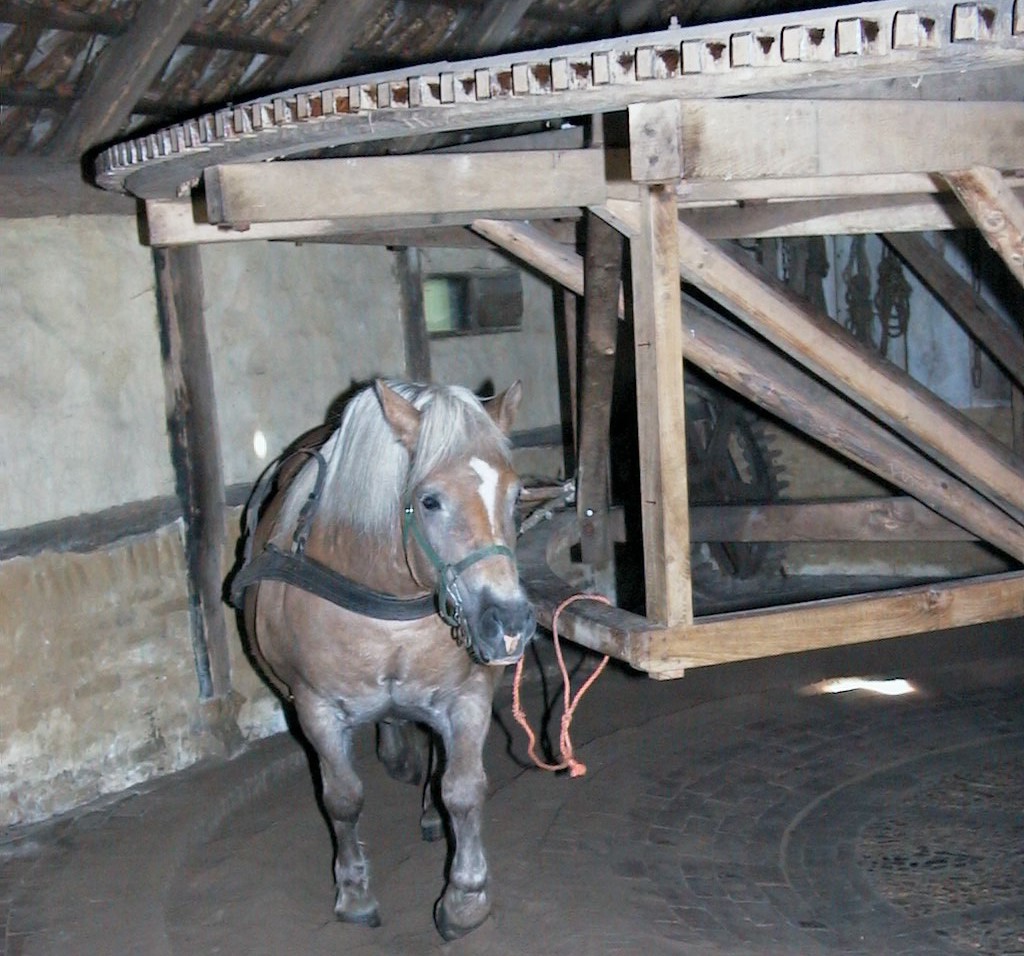

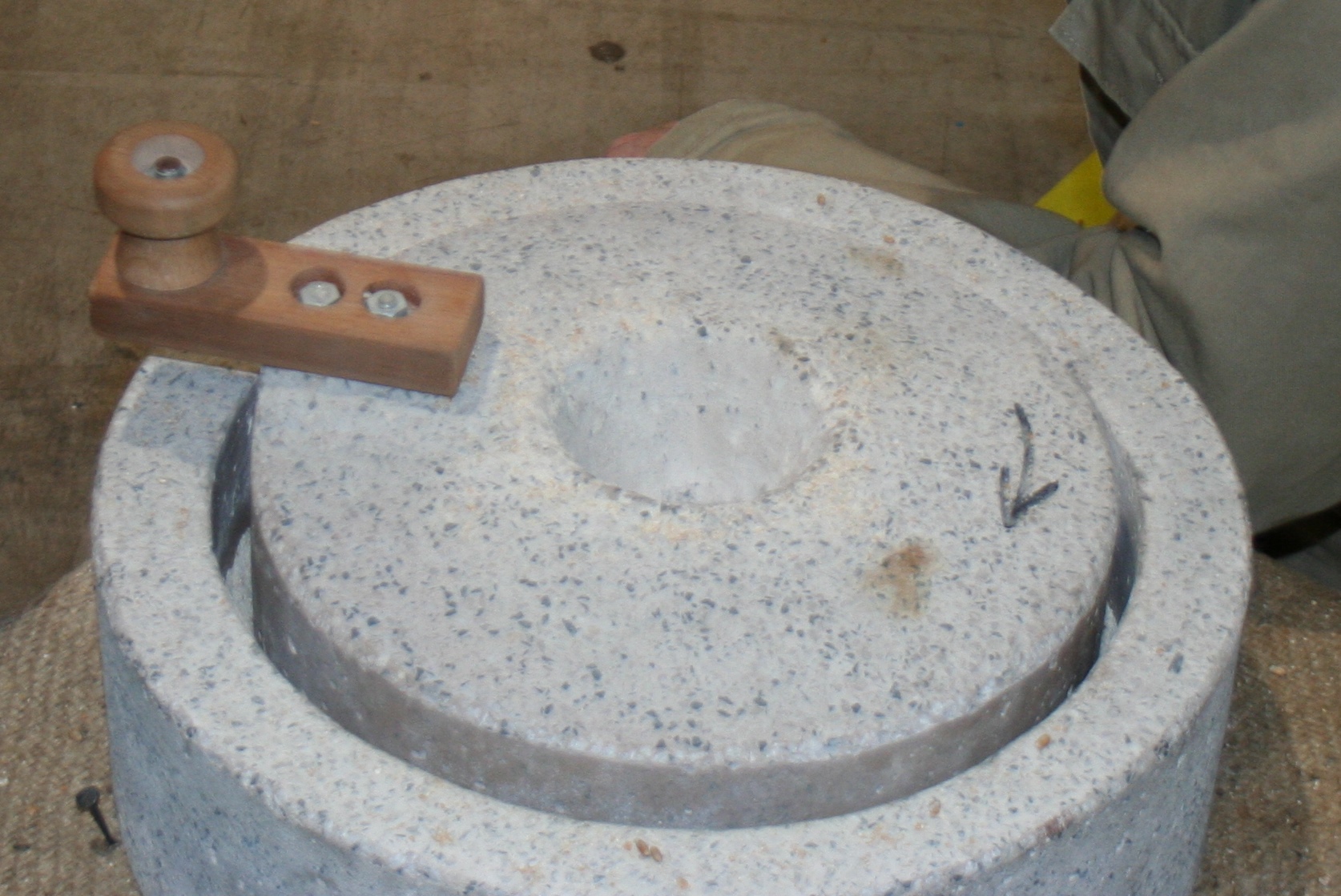
Handmill
Hand mills already existed in prehistory. It consisted of often no more than two rubbing stones to grind all kinds of things. Later people started using hand mills consisting of two small round grinding stones. Sometimes the grinder was too heavy to be operated by one person. The Romans used slaves for the heavy grinding of handmills, later slaves would be used for griding the sugar cane in plantations in Suriname.Machine powered mills
At the time of the industrial revolution, the possibility arose to drive the millstones via a motor. This is how machine-driven mills were created. Handy for the miller because he was not dependent on wind, water, horse or hand power. Production could continue at any time. In various places there are beautiful engines powered by gasoline, diesel and nowadays electricity.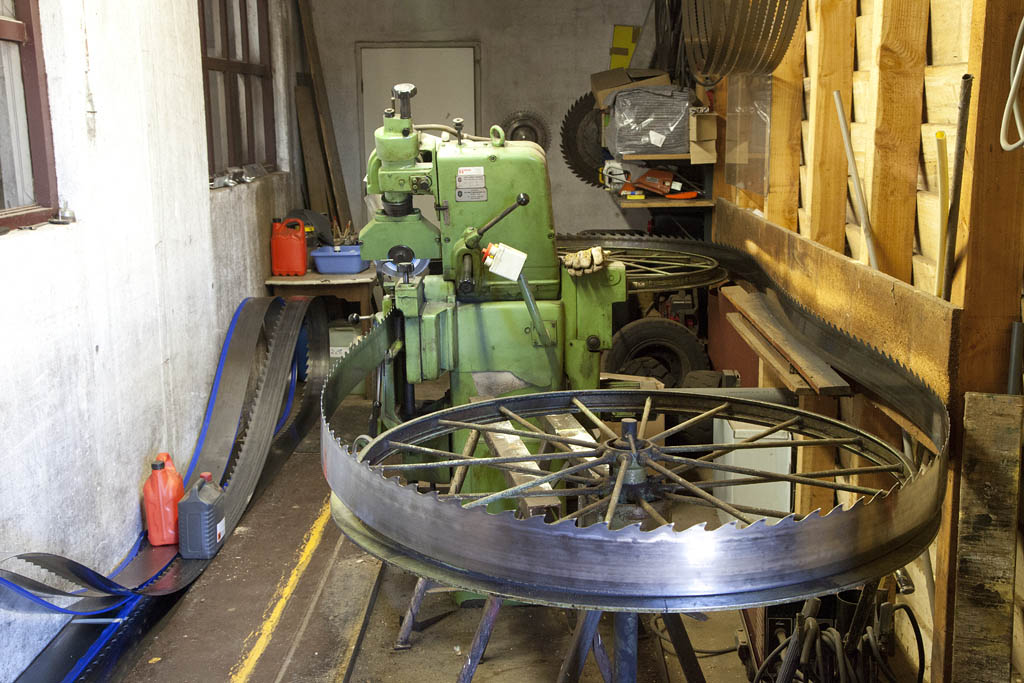

History of mills in EuropeThe mill is in the broadest sense the symbol of the European society. Since prehistory, humans had to work hard for their daily bread and since then, he has been looking for ways to perform more with less effort. The activation of animal muscular power, such as a horsemill, was one of the first forms, followed by the use of the much larger energy resources of hydro power and wind energy.
The ancient Greeks and Romans had primitive water mills for grinding grain. More than a thousand years later, the windmill followed, whose origin is still not sure. It is true that around 1200 the first windmills were built in Europe and eventually wind and water mills were present in large parts of Europe. They made it possible to multiply the limited human performance and thus laid the foundation for the currently highly developed European society. The mill in all its forms and applications has for centuries been indispensable to society and it has growth. It was based on relatively simple but essential technical principles, of high durability and using unlimited energy sources.
The mill is distinguished from almost all other monuments because it is a machine, a tool, and not a static building. It has never been meant to accommodate people. Construction and design are functional and not based on architecture or the like. Over the centuries, it became technically more and more refined. The fact that it is a machine means that, for any reason, it could be moved, and it has happened very often over the centuries with wooden mills. The relationship with water and wind had a major influence on the development of its environment, the mill biotope.
![Paard-en-wagen-1[1]](https://viamolina.eu/wp-content/uploads/2019/02/Paard-en-wagen-11.jpg)
![Molen-de-Zwaluw-Wiekenactie-BankGiroLoterij-99-1024×618[1]](https://viamolina.eu/wp-content/uploads/2019/02/Molen-de-Zwaluw-Wiekenactie-BankGiroLoterij-99-1024x6181.jpg)
The mill used to be for everyone and served the collective interest. In addition, it was through shape and size and dominant appearance wherever it stood. The mill also had an important place in everyday life. The mill and the church were, in a sense, focal points in society and previously determined the skyline of many towns and cities. Compared to some other categories of monuments, the mill measures some size and size in an unobtrusive place. However, this is not in relation to the vital role that the mill has fulfilled and still does in some places. In recent centuries, the mill was the high tech of its time and the only old technique that still functions after 7 centuries.
Wherever mills are, they are inseparable with their environment. The mills cannot be separated from the history and development of a country. They are a symbol of our history. From the battle against the water, like in the Netherlands where the pumping mills gave dry feet and new land. The industrial mills played a crucial role in the development of prosperity in many regions or countries. Their important role in food supply, which was guaranteed thanks to the many grain mills until the end of the nineteenth century. And of course, the wood sawmills sawing the wood for the fishing, merchant and battleships; the papermills, the oilmills, the fullmills…etc.
With the disappearance of the mill's economic function, appreciation for their cultural and historical value increased. Various arguments are used:
• Beauty. Due to their special shape, mills stand out.
• Historical. Mills remind us of our past.
• Technical. Without any fuss, mills are technically perfected tools.
• Landscape. Mills decorate the landscape.
• Educational. In mills we can learn a lot about our past, about technique and application of old materials.
These days mills get a lot of public attention. On national or regional Milldays, the public comes in large numbers to enjoy the beautiful mills which Europe still has. And due to the activities organized on these days, the mill is again part of the center of society.
